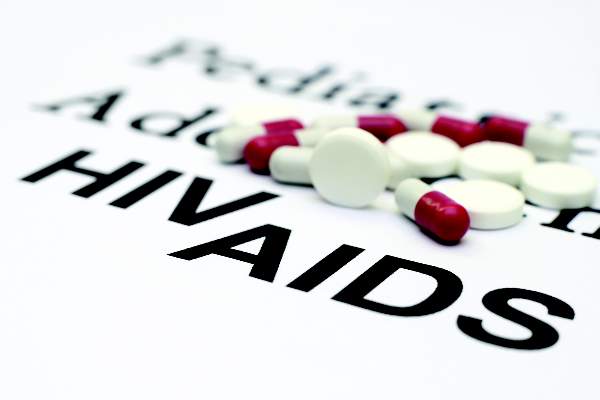A great volume of HIV and AIDS research enters the medical literature every month. It’s difficult to monitor everything, so here’s a quick look at some notable news items and journal articles published over the past few weeks.
Text message reminders are a promising intervention that can be used to increase HIV care compliance when logistically feasible, according to a meta-analysis published in AIDS Care.
A study published in AIDS found that people living with HIV who are older than age 65 years are at higher risk of comorbidities than are other fee-for-service Medicare beneficiaries.
A study in Thailand found a marked divergence of HIV DNA values between untreated and treated groups that occurred within the first 2 weeks of antiretroviral therapy (ART) and increased with time. The authors conclude that very-early ART offers the opportunity to significantly reduce the frequency of cells harboring HIV DNA.
An independent source of HIV RNA contributes to viral rebound within the cerebrospinal fluid after treatment interruption, according to a study in Virus Evolution. The most likely source of compartmentalized HIV RNA is a CNS reservoir that would need to be targeted to achieve complete HIV eradication, investigators said.
A recent six-site U.S. study discovered that 36% of nondrinking persons living with HIV in routine clinical care had a prior alcohol use disorder.
A study in HIV Medicine found that treatment of patients infected with hepatitis C virus and coinfected with HCV/HIV with all-oral direct-acting antiviral combinations , under real-life conditions, led to high and similar rates of sustained virologic response 12 weeks after the end of therapy.
A first-of-its-kind study in Tanzania demonstrated a significantly increased risk of acquiring HIV for lymphatic filariasis-infected individuals.
A clinical trial of HIV-infected adults treated with efavirenz-based antiretroviral therapy found that the late virologic failure rate was very low after successful suppression. The authors said virologic monitoring, if achievable in routine clinical practice, involving infrequent measurements might be considered.
The introduction of a low viral load threshold provides crucial improvements in recent infection testing algorithms, according to a study in AIDS. However, the authors said it does not eliminate non-zero “false-recent” rates, and mean durations of “recent” infection must be consistently estimated.
The risk of virologic failure in a population of HIV-infected patients on antiretroviral therapy, who achieved viral suppression at less than 20 copies/mL , was no different for patients who remained fully suppressed, compared with those who experienced subsequent episodes of very low level viremia.
A British study found that HIV self-testing among men who have sex with men represents an opportunity to reduce barriers to HIV testing and enhance prevention and access to care.
Hepatitis B virus coinfection was the most important risk factor for liver fibrosis and cirrhosis in HIV patients, and should be diagnosed early in HIV care to optimize treatment outcomes, according to a report in Tropical Medicine & International Health.
A recent study found that higher HIV RNA and wasting before antiretroviral therapy were independent risk factors for pneumonia in early ART-treated HIV-infected infants.
New information increases concerns about the association between the hormonal contraceptive depot medroxyprogesterone acetate and HIV acquisition risk in women, researchers said in a recent study. If the association is causal, the magnitude of effect is likely a hazard ratio of 1.5, although investigators said data for other hormonal contraceptive methods are largely reassuring.
A study of virally suppressed HIV-infected men with extensive antiretroviral exposure found no consistent associations between use of specific ART drugs and both subclinical coronary plaque presence and extent. Investigators said the findings support the hypothesis that, among virally suppressed persons, type of ART used is not in general a major determinant of subclinical coronary plaque risk.
More cost-effective and impactful HIV-prevention investments could be achieved across sub-Saharan Africa if domestic and international funders were to align strategically to build an aggregate funding pattern guided by the emerging understanding of local dynamics and epidemic drivers, a Lancet HIV study found.
A cross-sectional cohort study found evidence of endothelial dysfunction in HIV infection and in untreated compared to treated HIV infection, although asymmetric dimethylarginine (a marker of endothelial dysfunction) was not associated with subclinical atherosclerosis.
A modeling study in the journal AIDS concluded that, in mature HIV epidemics, between 3%-6% of transmission events are attributable to acute HIV infection among people who inject drugs.
The HIV epidemic serves as an amplifier of TB outbreaks by providing a reservoir of susceptible hosts , a study in eLife found, but HIV coinfection is not a direct driver for the emergence and transmission of drug-resistant strains.
A recent study of HIV-infected patients coinfected with hepatitis B and C viruses found that, despite increasing use of antiretrovirals, no clear reduction in end-stage liver disease risk was observed. The authors said treatment with direct acting antivirals for HCV and wider use of tenofovir-based regimens for HBV should be prioritized for coinfected patients.
HIV incidence, prevalence, and undiagnosed infections can be estimated using HIV case surveillance data and information on first CD4 test result after diagnosis, according to analysis published in JAIDS.
On Twitter @richpizzi




